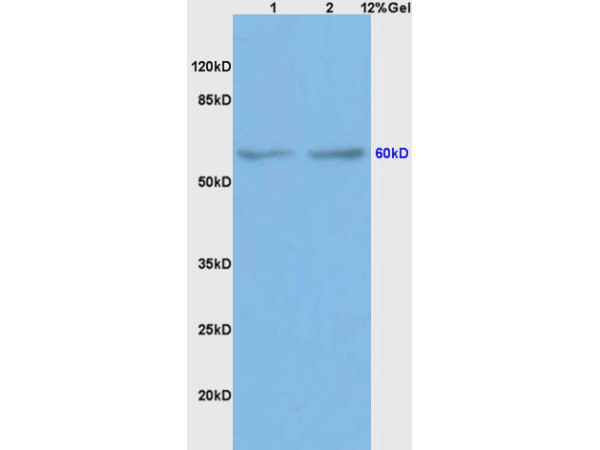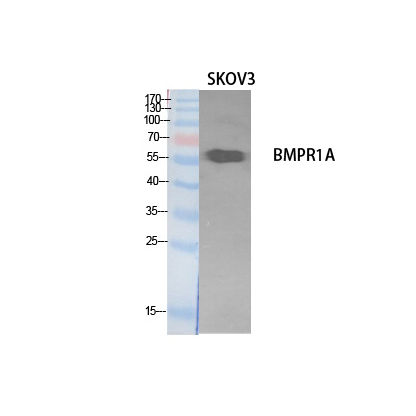![IHC-P analysis of formalin fixed human placenta tissue using GTX52504 BMPR1A antibody [8L7]. IHC-P analysis of formalin fixed human placenta tissue using GTX52504 BMPR1A antibody [8L7].](https://www.genetex.com/upload/website/prouct_img/normal/GTX52504/GTX52504_20191119_IHC-P_w_23060900_434.webp)
IHC-P analysis of formalin fixed human placenta tissue using GTX52504 BMPR1A antibody [8L7].
BMPR1A antibody [8L7]
GTX52504
ApplicationsWestern Blot, ImmunoHistoChemistry, ImmunoHistoChemistry Paraffin
Product group Antibodies
ReactivityHuman
TargetBMPR1A
Overview
- SupplierGeneTex
- Product NameBMPR1A antibody [8L7]
- Delivery Days Customer9
- Application Supplier NoteWB: 1:100 - 1:1000. IHC-P: 1:50 - 1:200. *Optimal dilutions/concentrations should be determined by the researcher.Not tested in other applications.
- ApplicationsWestern Blot, ImmunoHistoChemistry, ImmunoHistoChemistry Paraffin
- CertificationResearch Use Only
- ClonalityMonoclonal
- Clone ID8L7
- Concentration200 ug/ml
- ConjugateUnconjugated
- Gene ID657
- Target nameBMPR1A
- Target descriptionbone morphogenetic protein receptor type 1A
- Target synonyms10q23del, ACVRLK3, ALK-3, ALK3, BMPR-1A, CD292, SKR5, bone morphogenetic protein receptor type-1A, BMP type-1A receptor, activin A receptor, type II-like kinase 3, activin receptor-like kinase 3, bone morphogenetic protein receptor, type IA, serine/threonine-protein kinase receptor R5
- HostMouse
- IsotypeIgG2
- Protein IDP36894
- Protein NameBone morphogenetic protein receptor type-1A
- Scientific DescriptionThe bone morphogenetic protein (BMP) receptors are a family of transmembrane serine/threonine kinases that include the type I receptors BMPR1A and BMPR1B and the type II receptor BMPR2. These receptors are also closely related to the activin receptors, ACVR1 and ACVR2. The ligands of these receptors are members of the TGF-beta superfamily. TGF-betas and activins transduce their signals through the formation of heteromeric complexes with 2 different types of serine (threonine) kinase receptors: type I receptors of about 50-55 kD and type II receptors of about 70-80 kD. Type II receptors bind ligands in the absence of type I receptors, but they require their respective type I receptors for signaling, whereas type I receptors require their respective type II receptors for ligand binding. [provided by RefSeq, Jul 2008]
- ReactivityHuman
- Storage Instruction-20°C or -80°C,2°C to 8°C
- UNSPSC12352203






